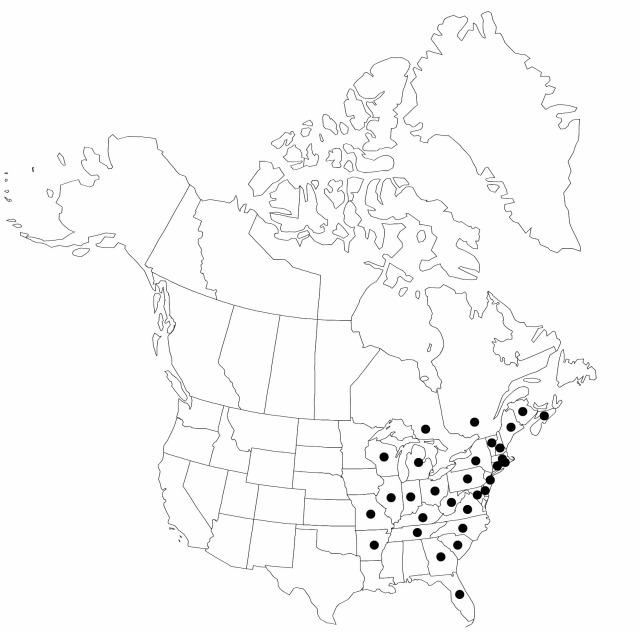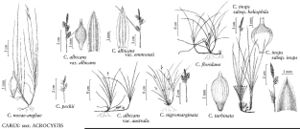familyCyperaceae
genusCarex
sectionCarex sect. Acrocystis
speciesCarex albicans
varietyCarex albicans var. emmonsii
Carex albicans var. emmonsii
Sida 14: 133. 1990.
IllustratedEndemic
Basionym: Carex emmonsii Dewey ex Torrey Ann. Lyceum Nat. Hist. New York 3: 411. 1836,
Rhizomes ascending to erect, 0–5(–20) mm. Staminate spikes 5–8.5 × 0.8–1.3 mm; staminate scales from median portion of spike 2.8–4 × 0.6–1.9 mm, midrib prominent, usually elevated and extending to apex of scale, usually with small teeth (15X). Perigynia 2.3–3.3 × 0.8–1.2 mm; beak with apical teeth 0.1–0.3 mm. 2n = 40.
Phenology: Fruiting early May–mid Jun.
Habitat: Mesic to rich moist soils on slopes in partial shade of hardwoods, occasionally in drier sites of sandy loam under mixed hardwood-pine, in richer soils than other varieties
Elevation: 50–900 m
Distribution
Loading map...

N.B., N.S., Ont., Que., Ark., Conn., Del., Fla., Ga., Ill., Ind., Ky., Maine, Md., Mass., Mich., Mo., N.H., N.J., N.Y., N.C., Ohio, Pa., R.I., S.C., Tenn., Vt., Va., W.Va., Wis.
Discussion
Selected References
None.
Lower Taxa
None.
